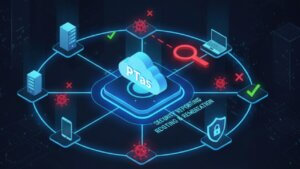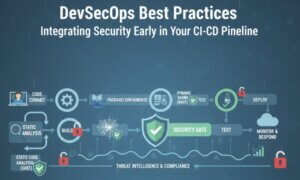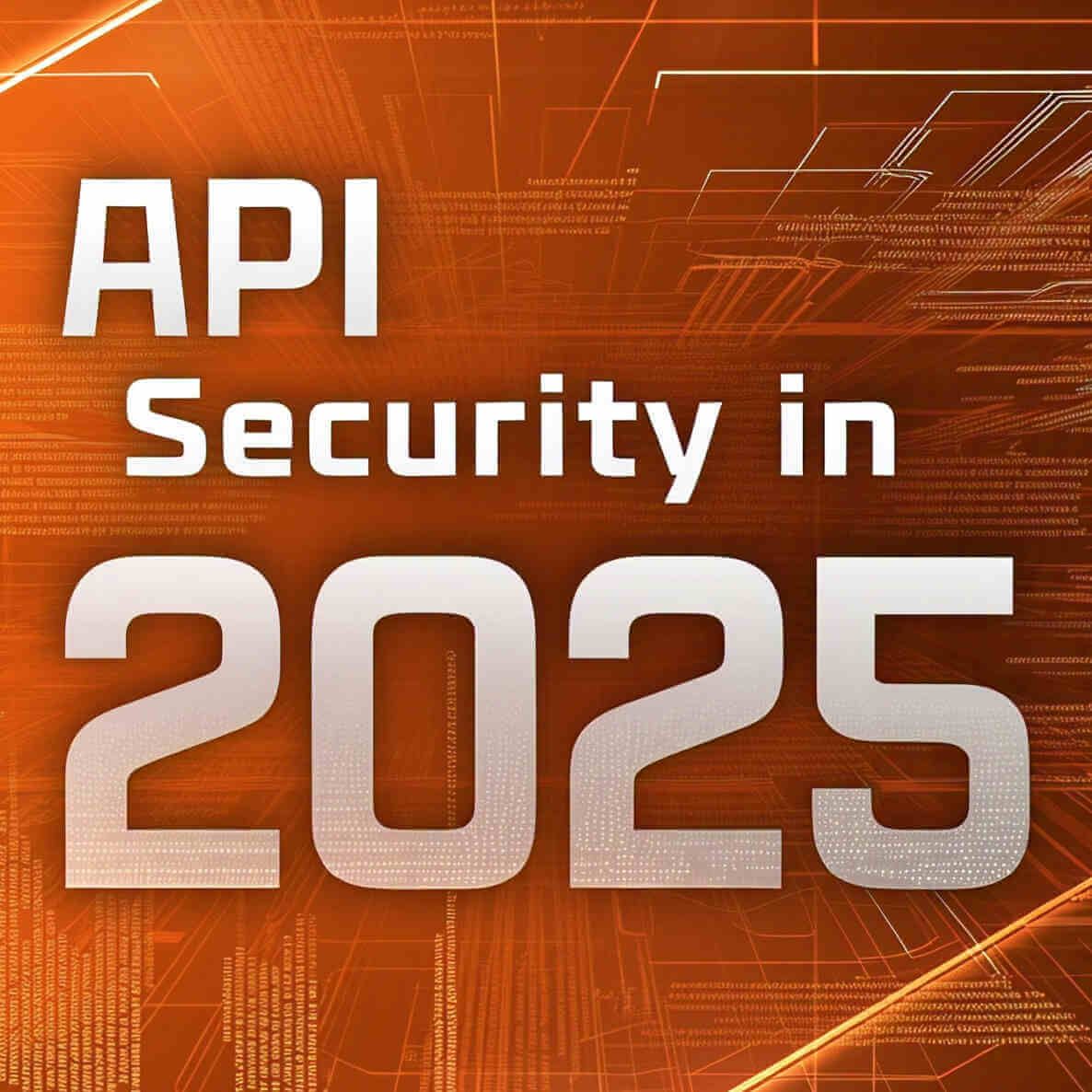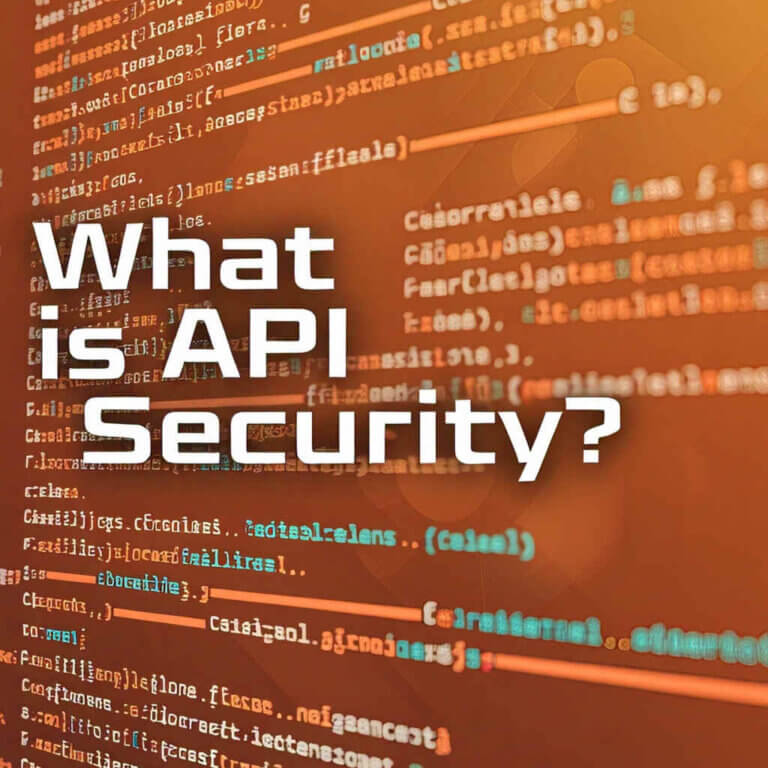Application Programming Interfaces (APIs) have become the lifeblood of modern software development. Powering everything from mobile applications and e-commerce platforms to cloud services and IoT devices, APIs facilitate seamless communication between systems. However, with their growing ubiquity comes increased attention from cybercriminals. In 2025, API security is not just a best practice—it’s a business imperative.
This blog explores the current state of API security in 2025, the most pressing attack vectors including Broken Object Level Authorization (BOLA), and the cutting-edge defense mechanisms organizations must deploy to stay secure.
Table of Contents
The Growing API Attack Surface
APIs are now more exposed than ever. As companies scale their digital presence using microservices, serverless architectures, and third-party integrations, the number of active APIs grows exponentially. According to a recent industry report, API traffic has overtaken web traffic for the first time in 2025, making APIs the most frequent entry point for cyberattacks.
The Problem of API Sprawl
Unmanaged APIs, also known as shadow APIs, emerge when teams build services without centralized governance or security reviews. This API sprawl leads to:
Poor visibility over endpoints
Inconsistent authentication
Incomplete documentation
Without adequate monitoring and testing, these endpoints become prime targets for exploitation.
Emerging API Threats in 2025
1. Broken Object Level Authorization (BOLA)
BOLA, ranked #1 in the OWASP API Security Top 10, occurs when an API fails to properly verify whether a user should have access to a requested object. In 2025, attackers are increasingly using automated tools to test endpoints for these flaws.
Example: An attacker modifies a user ID in an API request URL to access another user’s data:
GET /api/v1/users/6532
Changing to:
GET /api/v1/users/12346
Without object-level authorization checks, this simple change can lead to unauthorized data access.
2. Broken Function Level Authorization (BFLA)
Attackers manipulate API methods (POST, PUT, DELETE) to perform actions beyond their permissions. This can allow unauthorized changes to data or configurations.
3. Mass Assignment
APIs that automatically bind client input to server-side models may inadvertently allow attackers to modify sensitive fields by guessing property names.
4. Excessive Data Exposure
APIs often return more data than necessary. In 2025, threat actors scrape this surplus information to piece together user profiles for social engineering or identity theft.
5. Injection Attacks in APIs
APIs are still susceptible to classic injection attacks like SQL, NoSQL, and OS command injections if input data is not validated or sanitized.
6. Denial-of-Service (DoS) via Complex Queries
Especially in GraphQL APIs, attackers craft deeply nested or complex queries to exhaust system resources.
7. Lack of Rate Limiting and Throttling
Bots and automated scripts abuse endpoints to carry out credential stuffing or brute force attacks in the absence of proper rate controls.
API Security Trends in 2025
Zero trust as an API security trend in 2025
1. Zero Trust for APIs
The Zero Trust model—”never trust, always verify”—is being extended to API ecosystems. API gateways now enforce:
Continuous validation of user identity
Least-privilege access controls
Encryption at all stages
2. AI-Driven Threat Detection
Security tools now use AI and machine learning to detect anomalies in API behavior in real-time, enabling quicker identification of threats like BOLA or injection attempts.
3. API Security as Code
Security is being embedded into DevOps pipelines. Using tools like OpenAPI and Postman, teams can define security policies and test cases early in the development lifecycle.
4. Unified API Management Platforms
More organizations are consolidating API discovery, testing, monitoring, and threat detection into unified platforms to tackle API sprawl and maintain compliance.
Modern Defense Mechanisms
1. Authentication and Authorization
Use OAuth 2.0 and OpenID Connect for delegated access.
Prefer token-based authentication (e.g., JWT) over basic auth or API keys.
Implement role- and attribute-based access control (RBAC/ABAC) for fine-grained authorization.
2. Object and Function Level Authorization Checks
Apply checks at every endpoint and ensure access is granted only to permitted resources.
Implement context-aware authorization that considers user roles, actions, and resource sensitivity.
3. Input Validation and Sanitization
Validate all inputs against expected formats.
Sanitize inputs to prevent injection attacks.
Avoid blacklists—prefer whitelisting safe values.
4. Rate Limiting and Throttling
Prevent abuse with policies that limit the number of requests per user or IP.
Integrate with WAFs or API gateways to enforce thresholds.
5. Schema Validation and Contract Testing
Use tools like Swagger/OpenAPI validators to ensure clients follow the expected API schema.
Conduct contract testing to verify that integrations adhere to agreed protocols.
6. Data Minimization
Only return data that is absolutely necessary for the client.
Use field-level filtering in GraphQL and REST responses.
7. API Gateways and WAFs
Deploy API gateways that handle traffic inspection, logging, and threat mitigation.
Use Web Application Firewalls with API-specific rules to filter malicious requests.
8. Audit Logging and Monitoring
Log all access to APIs including source, timestamp, method, and outcome.
Enable real-time monitoring and alerts for unusual behavior.
The Future of APIs: 2025 and Beyond
With APIs now being the primary interface for digital communication, API security must evolve alongside emerging threats. In 2025, organizations that proactively adopt API security best practices will be better equipped to avoid data breaches, comply with regulations, and protect user trust.
Key takeaways:
The attack surface is expanding with API growth.
BOLA and other logic flaws are leading threats.
Zero Trust, AI-driven monitoring, and DevSecOps are transforming API protection.
If your organization relies on APIs—and nearly all do—it’s time to make API security a core part of your cybersecurity strategy.
Need help with API security? Our experts at SecureMyOrg can help you audit, test, and secure your APIs against today’s most dangerous threats. Reach out to us today!
Why Businesses Trust SecureMyOrg for Comprehensive Network Security
At SecureMyOrg, we uncover and fix all possible security vulnerabilities of mobile and web, while providing solutions to mitigate risks. We are trusted by renowned companies like Yahoo, Gojek and Rippling, and with 100% client satisfaction, you’re in safe hands!







Some of the things people reach out to us for –
- Building their cybersecurity program from scratch – setting up cloud security using cost-effective tools, SIEM for alert monitoring, building policies for the company
- Vulnerability Assessment and Penetration Testing ( VAPT ) – We have certified professionals, with certifications like OSCP, CREST – CPSA & CRT, CKA and CKS
- DevSecOps consulting
- Red Teaming activity
- Regular security audits, before product release
- Full time security engineers.
Relevant Posts

AI-Powered Phishing Emails: 7 Ways to Spot and Stop Them Before They Strike
Penetration testing as a service (PTaaS) lets experts simulate real attacks to uncover vulnerabilities before hackers do. This guide explains the process, benefits, and costs, helping businesses strengthen defenses with predictable, ongoing security checks.

Why Regular Penetration Testing is Essential for Modern Companies
Penetration testing as a service (PTaaS) lets experts simulate real attacks to uncover vulnerabilities before hackers do. This guide explains the process, benefits, and costs, helping businesses strengthen defenses with predictable, ongoing security checks.

What Is Penetration Testing as a Service?
Penetration testing as a service (PTaaS) lets experts simulate real attacks to uncover vulnerabilities before hackers do. This guide explains the process, benefits, and costs, helping businesses strengthen defenses with predictable, ongoing security checks.

How To Inspect Encrypted Traffic Without Breaking Privacy
Network administrators face a challenge: securing systems while respecting privacy. This guide explains how to inspect encrypted traffic without breaking privacy using metadata, anomaly detection, and machine learning ensuring visibility, compliance, and trust.

How to Audit Infrastructure as Code (IaC) for Security Vulnerabilities
Discover how to audit Infrastructure as Code (IaC) for security vulnerabilities with this practical guide. Learn to scan IaC files using tools like Checkov, fix issues like exposed resources, and integrate audits into CI/CD pipelines. Protect your cloud systems from misconfigurations and ensure compliance with clear, actionable steps.

DevSecOps Best Practices: Integrating Security Early in Your CI/CD Pipeline
This article provides a practical guide to embedding security into every stage of your CI/CD pipeline. Learn core DevSecOps best practices like SAST, DAST, dependency scanning, secrets management, and compliance automation to catch vulnerabilities early, foster a culture of shared ownership, and build a secure-by-design development process that accelerates release cycles.



